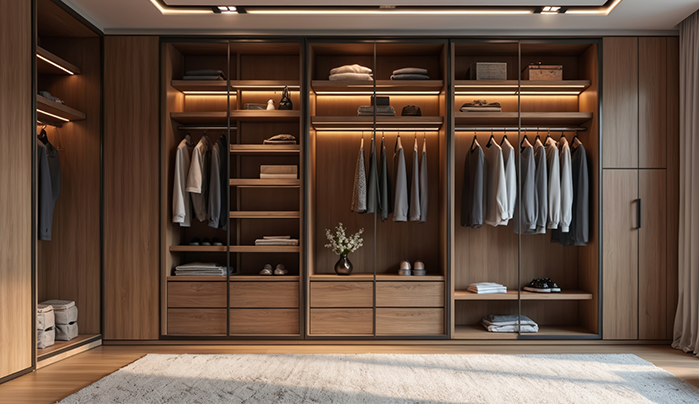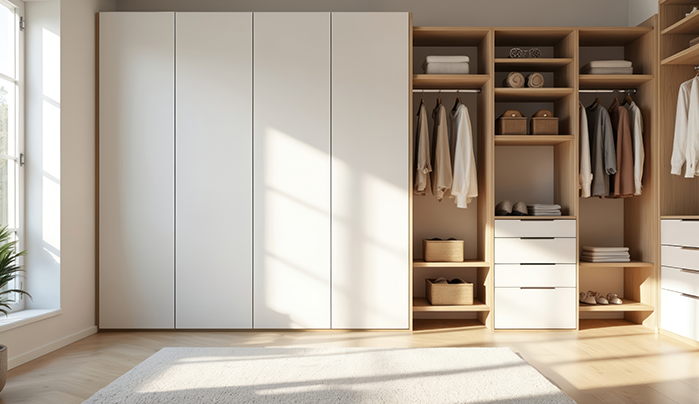
Wardrobes are more than storage, they’re design statements. But the choice of material determines whether that statement ages gracefully or warps away. While ordinary HDHMR boards have become a buzzword in modular furniture, branded waterproof plywood remains the material that truly stands the test of time.

Wardrobes deal with more than clothes, they deal with weight, humidity and time. That’s where branded BWP plywood excels.
Plywood’s layered construction provides high tensile and screw-holding strength. Shelves won’t bend, shutters won’t loosen, and structure won’t weaken even after years of use.
Whether it’s a monsoon-prone region or a damp wall, branded waterproof plywood stays solid and fungus-free, where ordinary HDHMR boards can start swelling or softening within 48 hours of exposure.
Plywood holds its shape season after season, unlike ordinary HDHMR which may expand or crack in fluctuating temperatures or humidity.

Even though some ordinary HDHMR boards offer a smooth surface and consistency for laminates, they are not moisture-proof, only moisture-resistant. That means they can fail fast in humid environments or near walls that attract dampness.
Common issues include:
Simply put, ordinary HDHMR is best reserved for dry zones or decorative panels, not for the hardworking parts of your wardrobe.

For interior designers, consistency in aesthetics matters but longevity matters more. That’s why most prefer plywood for carcasses, shelves and structure.
If your wardrobe needs to handle daily wear, moisture and long-term use, go with branded waterproof plywood. It’s stronger and built to last. Ordinary HDHMR boards may appeal to the eye at first glance, but plywood wins the real test of endurance. Because good design shouldn’t just look great, it should stay great, year after year.
Loading categories...